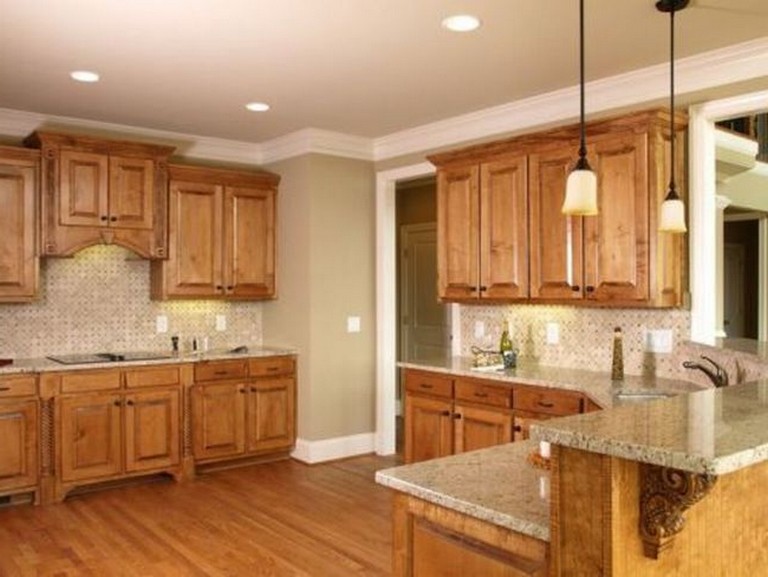Are you tired of your plain and boring kitchen walls? Do you want to add some personality and style to your kitchen without breaking the bank? Well, painting your kitchen wall two different colors is the perfect solution for you! It's a simple and budget-friendly way to transform the look and feel of your kitchen. In this article, we will guide you through the steps of painting your kitchen wall two different colors and give you some tips and tricks to achieve a professional and stylish finish.How to Paint a Kitchen Wall Two Different Colors
The first step in painting your kitchen wall two different colors is to choose the right colors. You want to make sure that the colors you choose complement each other and match the overall theme of your kitchen. Consider the colors of your cabinets, countertops, and backsplash when selecting your wall colors. Neutral colors such as grey, beige, or white are always a safe choice, but if you want to make a statement, you can go for bold colors like navy blue, emerald green, or even a bright yellow. Remember, the colors you choose will set the tone for your kitchen, so choose wisely.1. Choose the Right Colors
Before you start painting, it's essential to prep your walls properly. Start by cleaning the walls with a mild detergent and warm water to remove any dirt, grease, or grime. Make sure to also fill in any holes or cracks with spackling compound and sand them smooth. This will ensure that your walls are smooth and ready for painting. Then, cover the floors and any furniture with a drop cloth to protect them from paint splatters.2. Prep the Walls
Painter's tape is your best friend when it comes to painting two different colors on the same wall. Use the tape to create a clean and straight line where the two colors will meet. Make sure to press the tape firmly onto the wall to prevent any paint from seeping underneath. You can also use a level to ensure that the tape is perfectly straight.3. Use Painter's Tape
Priming your walls is an essential step when painting two different colors. It will help the paint adhere better to the walls and also prevent any bleed-through from the previous color. Use a high-quality primer and apply it evenly with a roller or brush. Let the primer dry completely before moving on to the next step.4. Prime the Walls
Now it's time to start painting! Use a roller or brush to apply the first color on the desired section of the wall. Make sure to paint up to the edge of the painter's tape but not over it. You can also use a small brush to paint along the edges of the tape for a clean and crisp line. Apply two coats of paint for a smooth and even finish, letting the first coat dry before applying the second.5. Paint the First Color
Once the paint is completely dry, carefully remove the painter's tape at a 45-degree angle. This will prevent any paint from peeling off with the tape. You will now have a clean and sharp line between the two colors.6. Remove the Tape
Repeat the same process for the second color, painting the desired section of the wall and applying two coats of paint. Make sure to also paint up to the edge of the first color to create a seamless transition between the two colors. Let the paint dry completely before removing the painter's tape.7. Paint the Second Color
After removing the tape, you may notice some imperfections or uneven lines. Use a small brush to touch up any areas that need it for a professional finish. You can also use a small roller for larger areas.8. Touch Up Any Imperfections
Now that your walls are painted, it's time to add some finishing touches. You can add a border or stencil to the line where the two colors meet for a more decorative look. You can also add some framed artwork or shelves to enhance the visual impact of the two-tone walls. Get creative and have fun with it!9. Add Finishing Touches
Why Painting Your Kitchen Walls with 2 Different Colors is the Perfect Design Choice

Creating Visual Interest
 When it comes to designing your home, the walls are like a blank canvas waiting to be transformed into a work of art. And what better way to add visual interest to your kitchen than by using
2 different colors
on the walls? This design technique has gained popularity in recent years as it allows homeowners to add personality and depth to their space. By using two complementary or contrasting colors, you can create a unique and eye-catching look that will make your kitchen stand out.
When it comes to designing your home, the walls are like a blank canvas waiting to be transformed into a work of art. And what better way to add visual interest to your kitchen than by using
2 different colors
on the walls? This design technique has gained popularity in recent years as it allows homeowners to add personality and depth to their space. By using two complementary or contrasting colors, you can create a unique and eye-catching look that will make your kitchen stand out.
Defining Zones
 Aside from adding visual interest, using
2 different colors
on your kitchen walls can also help define different zones within the space. For example, you can use a lighter color for the dining area and a darker color for the cooking area. This not only creates a clear separation between the two spaces but also adds a sense of cohesion to the overall design. You can also use different colors to define other zones, such as a coffee nook or a breakfast bar, depending on your specific needs and preferences.
Aside from adding visual interest, using
2 different colors
on your kitchen walls can also help define different zones within the space. For example, you can use a lighter color for the dining area and a darker color for the cooking area. This not only creates a clear separation between the two spaces but also adds a sense of cohesion to the overall design. You can also use different colors to define other zones, such as a coffee nook or a breakfast bar, depending on your specific needs and preferences.
Highlighting Architectural Features
 Another benefit of using
2 different colors
on your kitchen walls is that it can help highlight any architectural features or details in the space. For instance, if you have a beautiful kitchen island or a unique backsplash, painting the walls around it in a different color can make it stand out even more. This technique is especially useful if you want to draw attention to a specific area of your kitchen or if you want to add some depth and dimension to the room.
Another benefit of using
2 different colors
on your kitchen walls is that it can help highlight any architectural features or details in the space. For instance, if you have a beautiful kitchen island or a unique backsplash, painting the walls around it in a different color can make it stand out even more. This technique is especially useful if you want to draw attention to a specific area of your kitchen or if you want to add some depth and dimension to the room.
Creating Balance
 Using
2 different colors
on your kitchen walls can also help create a sense of balance in the space. If your kitchen has a lot of cabinets or appliances on one side, you can use a darker color on that wall to visually balance out the space. This will prevent the room from feeling too heavy on one side and create a more harmonious and well-designed look. You can also use this technique to balance out natural light in the room by using a darker color on one wall and a lighter color on the opposite wall.
In conclusion, painting your kitchen walls with
2 different colors
is not only a trendy design choice but also a practical one. It allows you to add visual interest, define different zones, highlight architectural features, and create balance in your kitchen. So, why settle for plain white walls when you can unleash your creativity and transform your kitchen into a work of art with just a simple coat of paint?
Using
2 different colors
on your kitchen walls can also help create a sense of balance in the space. If your kitchen has a lot of cabinets or appliances on one side, you can use a darker color on that wall to visually balance out the space. This will prevent the room from feeling too heavy on one side and create a more harmonious and well-designed look. You can also use this technique to balance out natural light in the room by using a darker color on one wall and a lighter color on the opposite wall.
In conclusion, painting your kitchen walls with
2 different colors
is not only a trendy design choice but also a practical one. It allows you to add visual interest, define different zones, highlight architectural features, and create balance in your kitchen. So, why settle for plain white walls when you can unleash your creativity and transform your kitchen into a work of art with just a simple coat of paint?







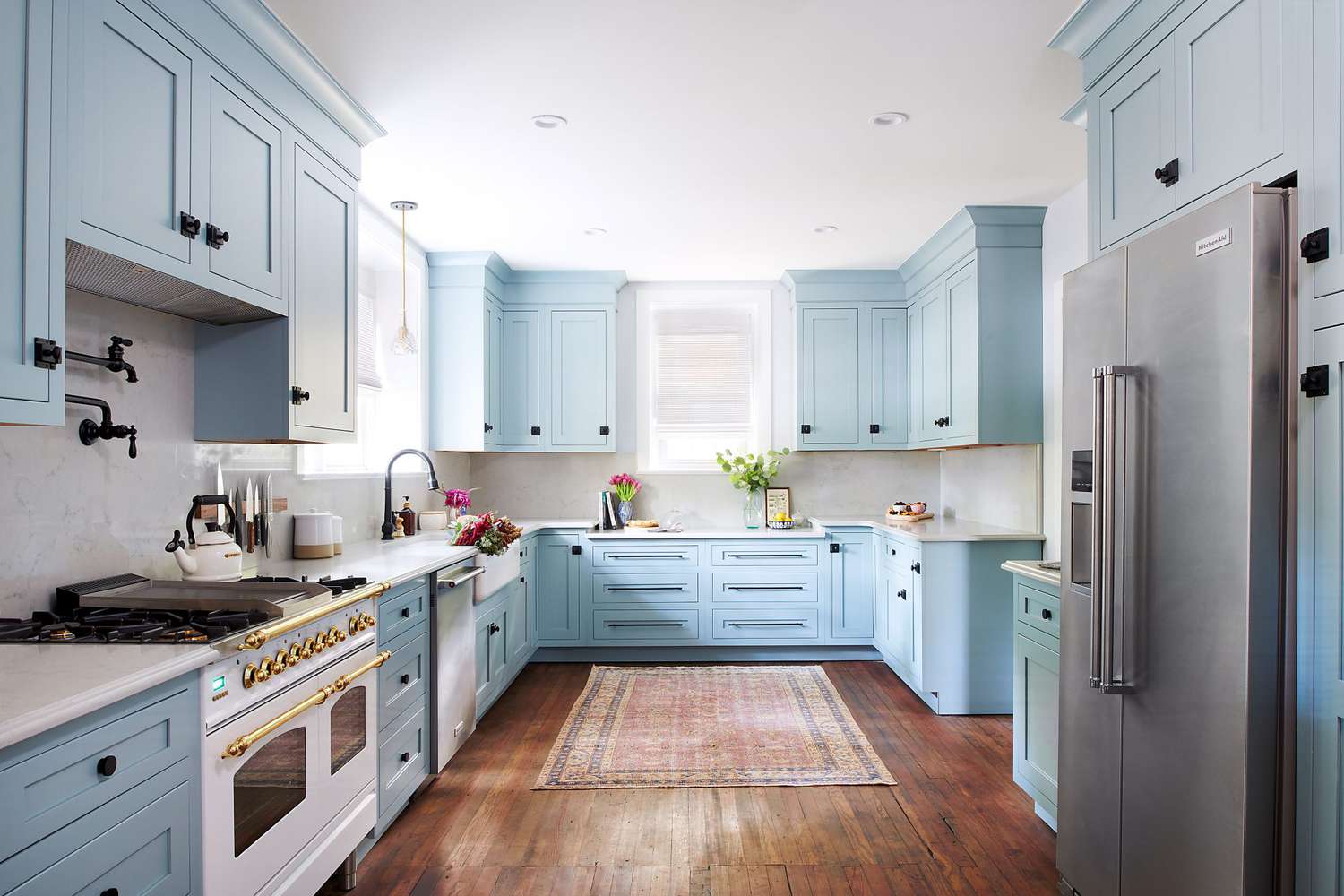
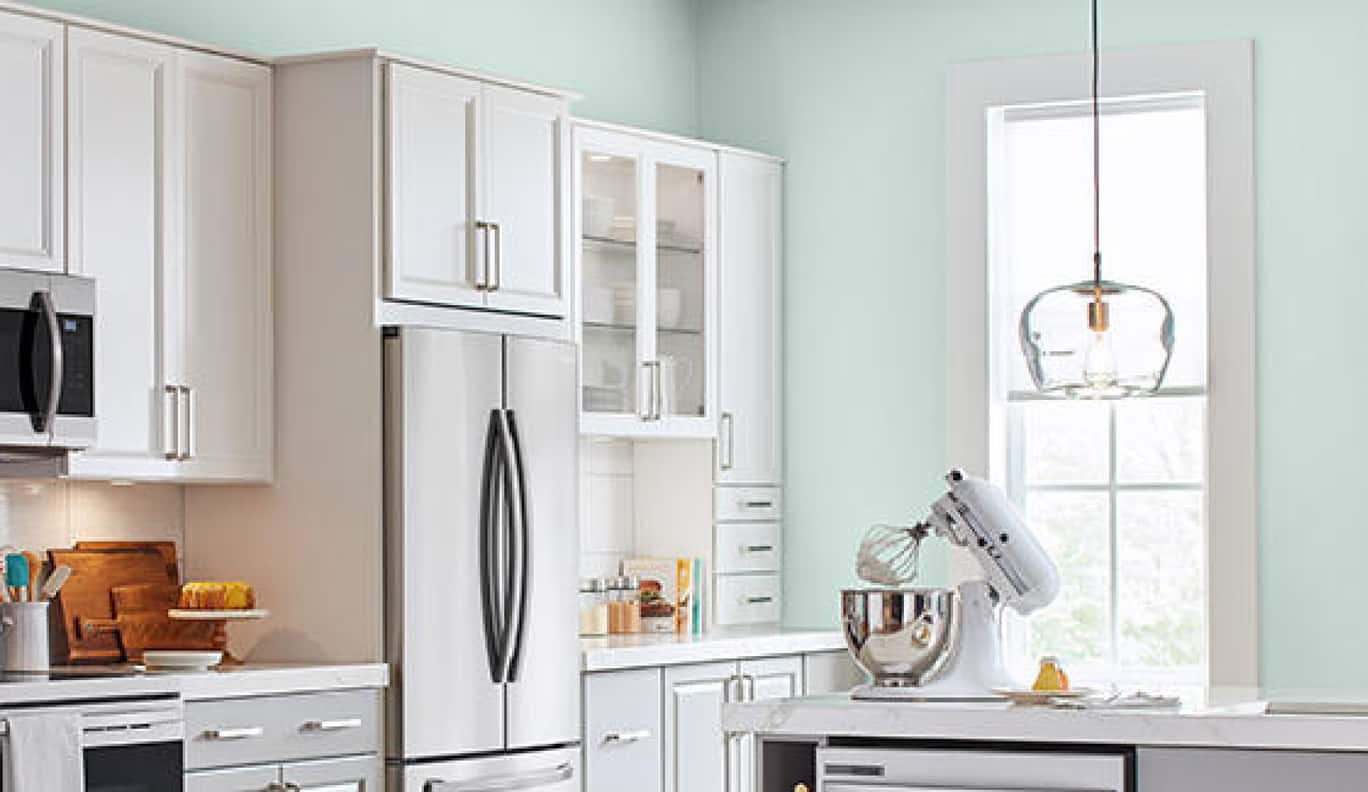
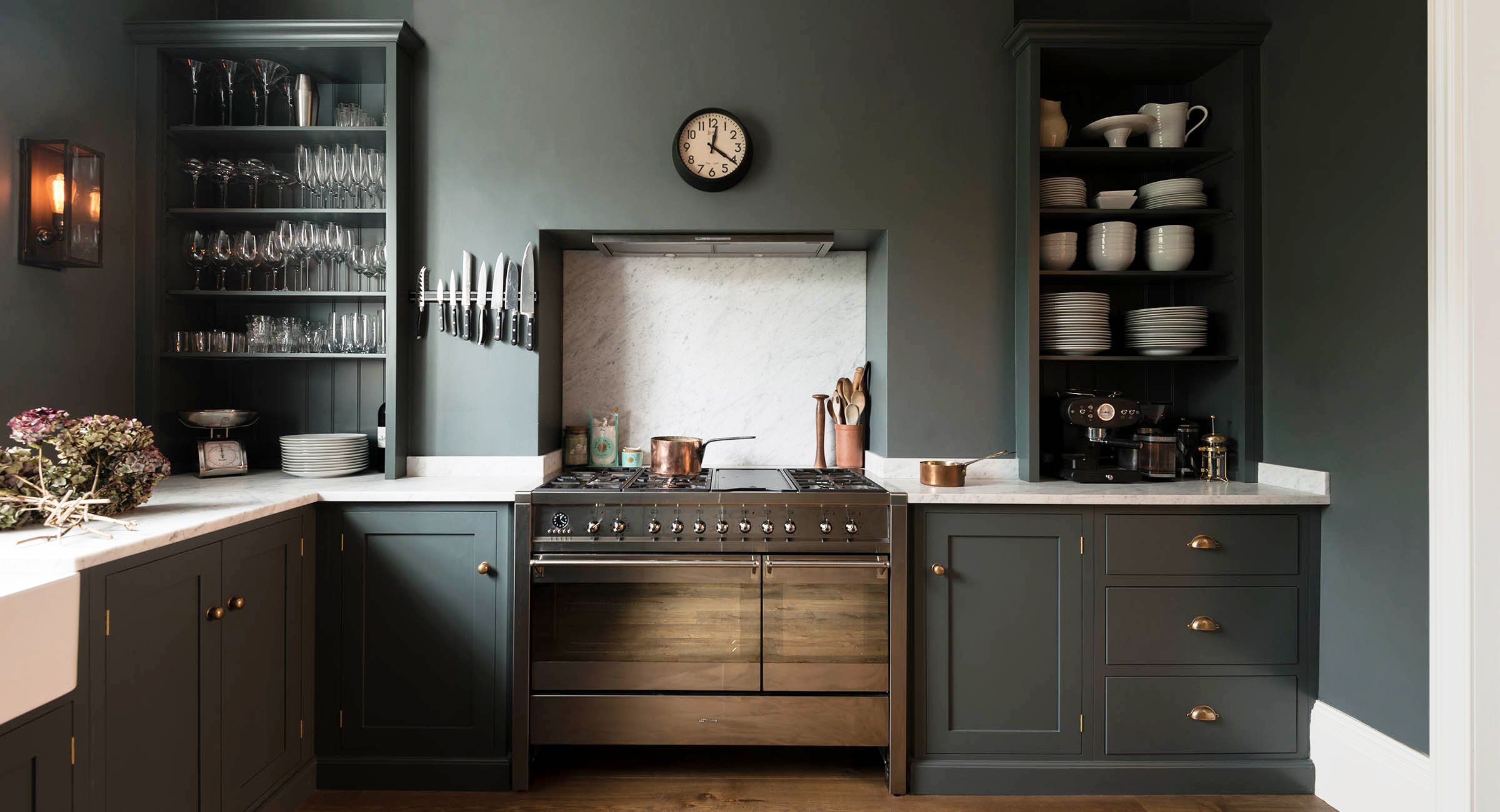
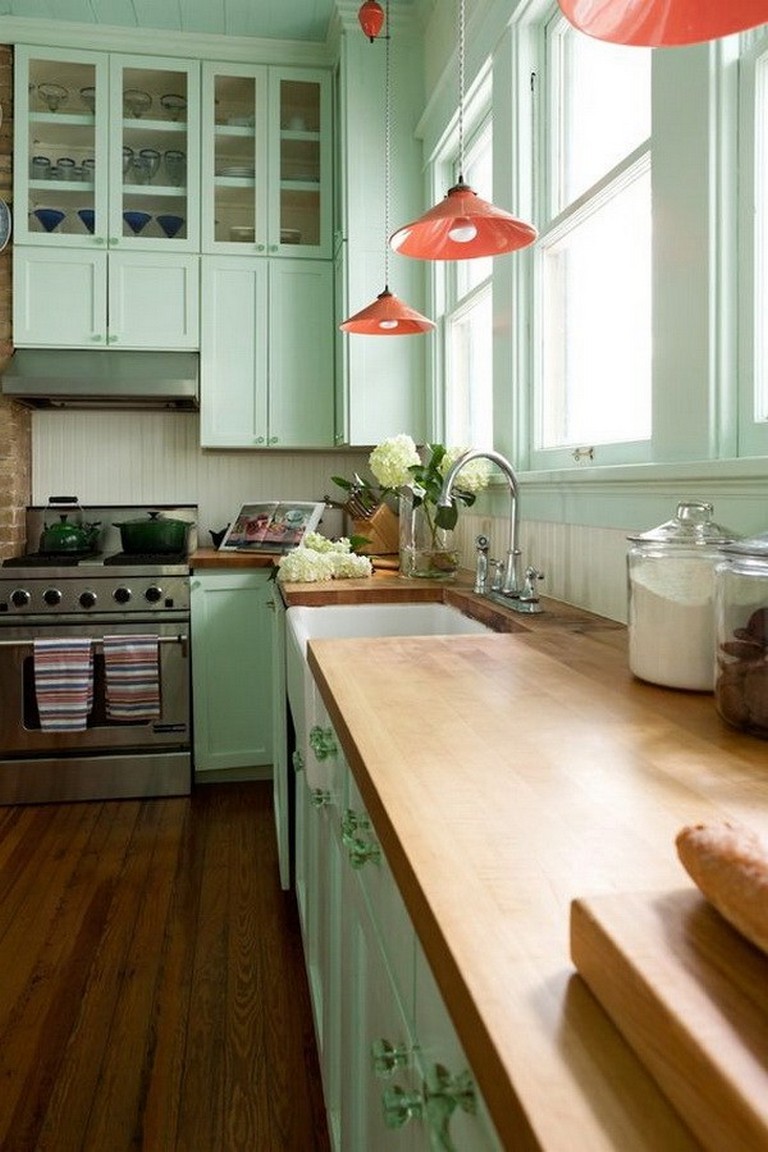

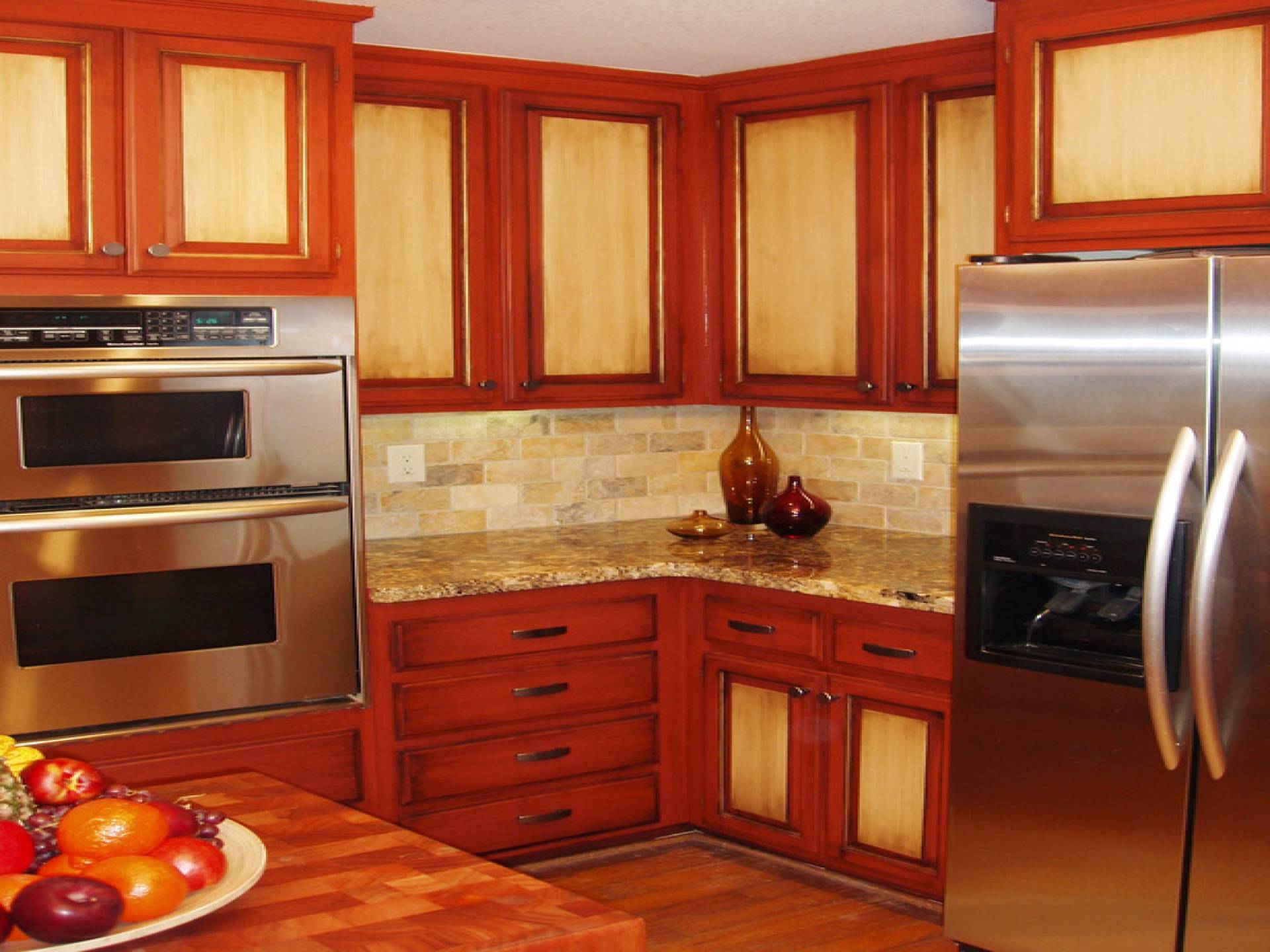
/Warm-Duck-GriegeSherwin-Williams-White-Duck-greige-cream-walls.-BEnjamin-Moore-Edgecomb-Gray-cabinets-dark-wood-island-wood-beams.-Kylie-M-Interiors-Edesign-online-paint-color-blog-1-5c76e62246e0fb0001a5ef9a.jpg)


